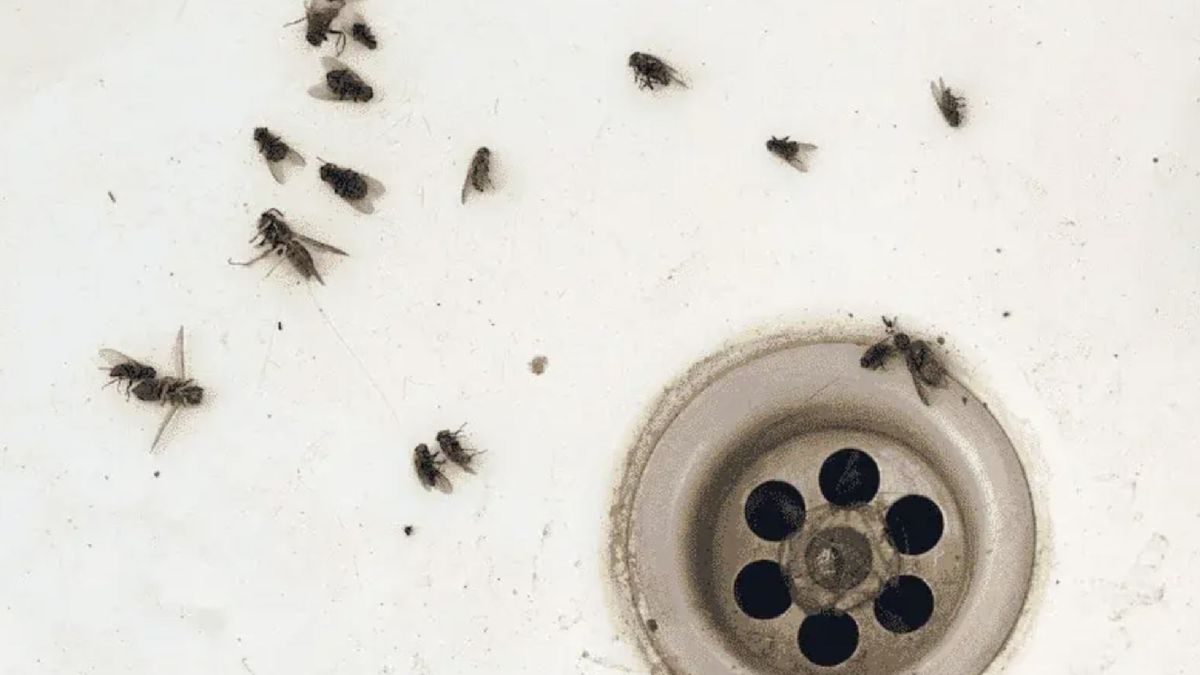Drain flies, often seen fluttering around sinks and drains, can quickly turn into a nuisance if not addressed promptly. Their presence signals a potential issue with moisture and organic matter accumulation in your plumbing. This article provides a comprehensive guide on how to effectively eliminate drain flies, ensuring your home remains fly-free and healthy.
#1 Visual and Behavioral Identification Tips
- Appearance: Look for fuzzy, grayish wings and a stout body.
- Flight Patterns: Drain flies tend to flutter erratically, making short flights.
- Habitat: They are commonly found near sinks, drains, and other moist areas.
- Breeding Sites: Check for stagnant water or organic matter buildup, as these are their preferred breeding grounds.
#2 How to Identify a Drain Fly Infestation
Identifying a drain fly infestation is crucial for effective control. Here are key signs to look for:
- Presence of adult flies: Spotting them near drains or damp areas indicates a potential infestation.
- Larvae: Small, wriggling larvae may be visible in the organic matter within drains.
- Unpleasant odors: A musty smell near drains can suggest decaying organic material.
#3 Common Causes of Drain Flies in Your Home
Understanding the causes of drain flies can help in effectively eliminating them. Key contributors include:
- Stagnant water: Pools of standing water in sinks or drains provide an ideal breeding habitat.
- Organic material buildup: Food particles, grease, and soap scum can accumulate in drains, attracting drain flies.
- Poor drainage: Leaky pipes or slow drains can create damp environments that favor fly reproduction.
#4 Step-by-Step Guide: How to Get Rid of Drain Flies
To effectively eliminate drain flies, follow this structured process:
Step 1: Identify Infested Areas
- Inspect all sinks, showers, and drains in your home.
- Look for signs of adult flies and larvae.
Step 2: Clean Drains Thoroughly
- Remove any visible debris from drains.
- Use a brush to scrub the sides of the drain to eliminate eggs and larvae.
- Flush with hot water to help dislodge any remaining organic material.
Step 3: Use Effective Cleaning Solutions
Employ specific products or natural remedies to kill flies and larvae:
- Enzyme cleaners: These break down organic matter and can be effective against drain flies.
- Vinegar traps: Mix equal parts vinegar and dish soap in a bowl. Place it near the drain; the flies will be attracted to the vinegar and trapped by the soap.
- Boiling water: Pouring boiling water down the drain can help kill larvae and clear out debris.
Step 4: Seal Entry Points
- Inspect all potential entry points, including cracks and gaps around pipes.
- Seal any openings with caulk or weather stripping to prevent future infestations.
Step 5: Monitor and Maintain
- Continue to check for signs of drain flies weekly.
- Keep drains clean and free of debris to prevent recurrence.
#5 Best Drain Fly Removal Methods (With Examples)
Choosing the right method for drain fly removal can significantly influence the effectiveness of your efforts. Here’s a comparison of DIY and commercial removal methods:
DIY Methods
- Vinegar and baking soda: Pour a cup of baking soda followed by a cup of vinegar down the drain. Let it sit for 30 minutes, then flush with hot water.
- Soap and water: A mixture of dish soap and water can suffocate flies when poured directly into the drain.
Commercial Products
- Enzyme-based cleaners: Products like Bio-Clean contain enzymes that digest organic waste and are effective against drain flies.
- Chemical drain cleaners: While effective, these can be harsh on plumbing and should be used cautiously.
#6 Preventing Future Drain Fly Infestations
To maintain a fly-free environment, implement the following prevention strategies:
- Regularly clean drains and remove any organic buildup.
- Fix leaks and ensure proper drainage to eliminate standing water.
- Store food properly and clean up spills promptly to deter flies.
#7 When to Call a Professional
In some cases, a drain fly infestation may require professional intervention. Consider seeking help if:
- The infestation persists despite your best efforts.
- There are underlying plumbing issues contributing to moisture problems.
- You are uncomfortable handling chemicals or pest control methods.

